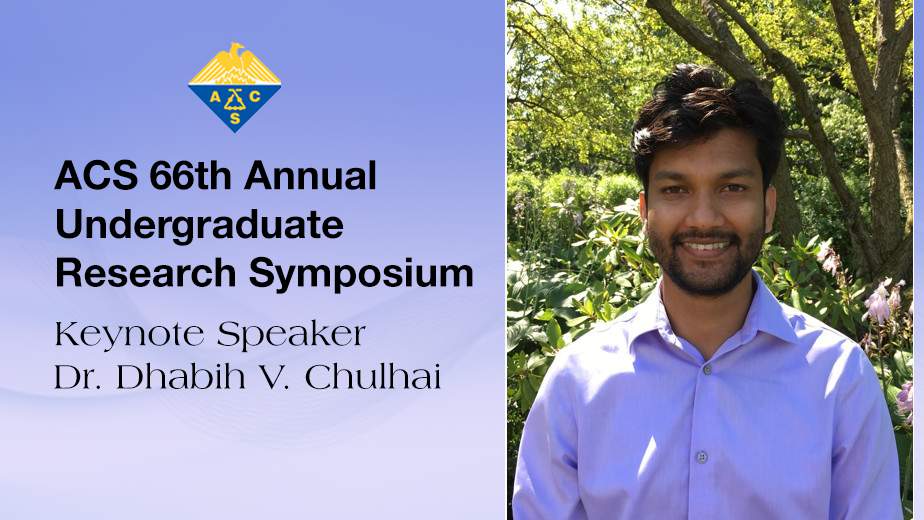ACS 66th Annual Undergraduate Research Symposium
York College CUNY
718-262-2592
The New York Chemistry Students' Association Student Affiliate Committee – New York Section American Chemical Society
(breakfast, luncheon and award reception included)
Sign up as an attendee at http://www.newyorkacs.org/meetings/urs/urs.php
Keynote Speaker
Dr. Dhabih V. Chulhai
Dept. of Chemistry, University of Minnesota, Minneapolis MN
Dhabih Chulhai grew up in Guyana and began his studies in chemistry at the University of Guyana. He received his B.S. in Chemistry at York College of the City University of New York (CUNY) in 2011, where he worked with Prof. Ruel Desamero, and his Ph.D. in Chemistry from The Pennsylvania State University in 2016, working with Prof. Lasse Jensen. Since then, he has been working as a postdoctoral associate with Dr. Jason Goodpaster at the University of Minnesota. Dr. Chulhai was awarded the Eugene and Jane Apple Science Graduate Fellowship at Penn State University for his contributions to the National Science Foundation’s (NSF), Center for Chemical Innovation (CCI) entitled Center for Chemistry at the Space-Time Limit (CaSTL). In CaSTL he worked with a team to develop and use theoretical methods to understand chemistry at the smallest possible length and time scales. He is currently a part of the Department of Energy’s Nanoporous Materials Genome Center, where his research is focused on developing and using highly accurate quantum chemical methods to guide the discovery of novel materials.
Keynote Address
Understanding Chemistry Using Theoretical Embedding Methods
Abstract: All of the chemistry may be understood by solving the time-dependent Schrödinger equation for the relevant system, although exact solutions are often impossible or computationally too expensive. Theoretical and computational chemists seek to find and use shortcuts that are both accurate and computationally tractable to solve this equation. Luckily, most of the chemistry often occurs in a small region of an otherwise complex environment. As such, we are interested in using embedding methods—where we use a highly accurate method to describe the small region of interest but describe the rest of the environment using less accurate methods—to model systems. Experiments are now able to observe chemistry happening one molecule at a time, using techniques like surface-enhanced and tip-enhanced Raman scattering. We will show how using these embedding methods allows us to gain insights into these experimental findings.
Revised: April 19, 2018
